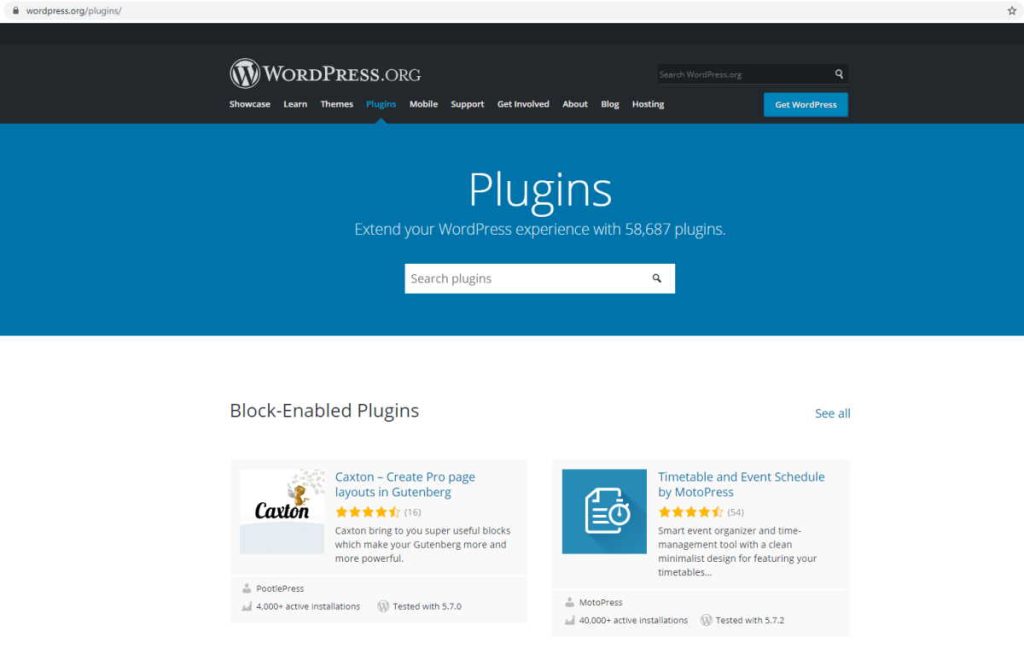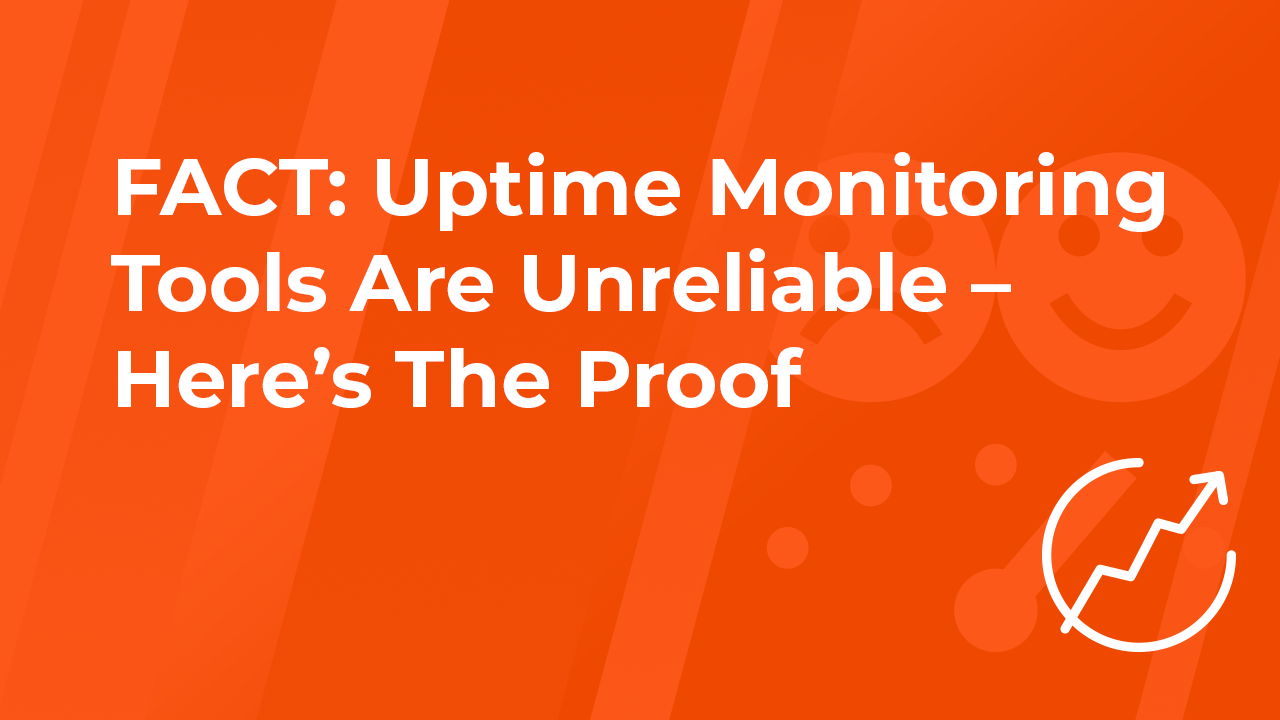Why Do Uptime Tools Matter?
As we Web entrepreneurs know, getting traffic to our websites is one of our main tasks. So when visitors do arrive at our website, they should have the best possible experience in terms of page loading speed and general usability.
Speed is why so many Webmasters move to WPX in the first place and in the most recent independent tests by Kevin Ohashi of ReviewSignal.com, WPX won the global page loading speed in all 3 entered categories (under $25 monthly, $25-$50 monthly and $51-$100 monthly) based on webpagetest.org results – more details here.
But what if visitors come to your site and it is offline.
For us Webmasters, this is a nightmare and uptime is something that every hosting service focuses on but even Google and Amazon Web Services have outages.
Fastly’s outage in June 2021 took down CNN, Spotify, HBO, NY Times and many others for a while.
However, what if the tool we are using to monitor downtime is itself unreliable and gives false positives (downtime)?
That’s the situation we deal with sometimes at WPX when a customer has received repeated notifications that their site is down, when in fact it hasn’t been down at all.
At the time of writing, we are monitoring one WPX customer case – a jewelry website – using THREE separate, independent tools: Uptime Robot, Status Cake, and Freshping.io – for privacy the customer’s site name has been hidden.
UptimeRobot.com says all is good (100% for the last 30 days):

Statuscake.com also says all is good (100% uptime):

but Freshping.io says the same site is constantly going offline, see the red dots, 8 downtime incidents in the last month (it’s wrong)

So a site owner ONLY relying on 1 tool, say freshping.io in this case, would assume that they have a terrible host, even if the site has perfect uptime – more on that with another specific case study below.
The point is to not jump in and automatically assume that the host is to blame.
Instead (this applies to whatever hosting you’re using, not just WPX):
1. Use MULTIPLE tools (at least 3, most are free) to cross-check uptime accuracy.
2. Add ALL your sites from the same hosting account to these independent tools and see if your other sites are also showing downtime. If they are, then there may be a server issue (if the different tools agree) but if it is only 1 site, then it could be the configuration of that site (a heavy cron job, for example) or a false positive, and,
3. If you think your site is down, check on independent tools like downforeveryoneorjustme.com and tools.pingdom.com which will show an error if the site actually is offline.
MORE PROOF: Why You Shouldn’t Trust Just One Uptime Tool
As I mentioned earlier, every year, the founder of ReviewSignal.com runs a battery of tests on WordPress hosting companies to find out which ones deliver high performance and which ones do not.
One part of his test is to monitor the uptime of each host.
BUT, and it’s a big BUT:
Kevin ALSO compares the uptime monitors of more than 1 tool, as he wrote for his late May 2021 test:
“Uptime is monitored by two companies: Hetrix and Uptime Robot. A self-hosted monitor was also run in case there was a major discrepancy between the two third-party monitors”.
In previous years, Kevin has also used Statuscake, as you will see below.
What is interesting and is backed up by our hosting experience at WPX is that when customers question us about possible downtime, they are always only using one tool, such as Uptime Robot, Statuscake, or ManageWP’s tool.
Below, I have shown his test results from 1 of the 6 categories he tested in 2021, 2020, and 2019 which you can see for yourself on the links below. The other categories illustrate the same problem, namely:
Any single uptime monitoring tool can report a false positive (downtime) and should be cross-checked
with other tools for verification.
In 2019 (see below), the most obvious conflict was on GoDaddy’s reported uptime over 3 months – Uptime Robot said that was only up 43% of the time while StatusCake shows it was 78%!
As bad as GoDaddy is, it’s very unlikely that either number is correct.
While other data conflicts are much smaller, shouldn’t they align perfectly if each tool is 100% accurate?
In fact, over 50% of tested hosts here have a conflicting reading on uptime across 2 tools – you can view Kevin’s test results directly here.

Surely by 2020 though, these tools were getting more reliable?
Though the differences are smaller, we still have a conflict in 50% of reported uptime results across 3 months of tracking in Kevin’s 2020 results here:

Then in May 2021, Kevin published his latest results and found that in this category, there was still a small but noticeable conflict in uptime reporting in 10 out of 22 tested cases.

How To Fight This Problem?
In short, be aware that no host, software tool, service, or plugin is infallible (you saw the issues with Google, Amazon, and Fastly above).
When you get a report of a site issue from any tool, cross-check it before jumping to conclusions.
A Lost WPX Customer Case Study
On May 7, 2021, Jim Harmer from IncomeSchool.com published this video explaining his unhappiness with WPX, based on 2 issues:
[1] He was continually receiving downtime notifications from a 3rd party tool, and,
[2] One of his sites was behaving strangely and showing a blank page while editing.
I have addressed the first issue above and it sounds like Jim was only using 1 tool for monitoring uptime.
On the second issue, we deal with software conflicts all the time here and apparently only 1 site was affected, according to his staff (assuming we have the right case, site URL hidden for privacy):

When you have an issue on 1 site and the same issue is not apparent on other sites in the same hosting account on the same server, that is most likely a software conflict (or an unusually resource-heavy plugin) and we routinely troubleshoot those.
With close to 60,000 free plugins available in the WordPress repository + many more paid ones out there, tracking their compatibility with each other is physically impossible (and we never coded any of them).
Plugins can also conflict with different PHP versions – get ready for PHP 8! – and different WordPress versions.
Sometimes customers assume that because a plugin is well-known or popular, that it must function perfectly.
If that were true of all technology companies’ products, then Intel wouldn’t have had their problems with Meltdown and Spectre, Windows 10 wouldn’t have hundred of security holes and Google Glass wouldn’t have been a $900 million dud (pocket money for Google, I know).
Even up-to-date plugins can have an undiscovered vulnerability that the developers are unaware of, as happened with the popular Revolution Slider plugin back in the day.

One final point that I respectfully challenge Jim on is his claim that Bigscoots is only “a little more expensive” than WPX.
In fact, if a user needs to host more than 1 website, then Bigscoots is 2-4x more expensive than WPX so for that, like buying a car, house or cruise holiday that is 2-4x more expensive than another one, you should get a lot more (server) resources and that is probably why that software conflict didn’t recur on Bigscoots, though I don’t believe that case was ever escalated to our SecOps team for investigation (free to all WPX customers).
Here is how pricing and value compare between WPX and Bigscoots on the entry-level plan:

and on the mid-level plan:

and on the top-level plan (apart from custom enterprise quotes):

Despite their significantly higher price, Bigscoots also does not offer free malware removal (they charge $50-$100 per hour, WPX is free) and don’t have live chat but instead customers need to leave a message and they will get back in a “few minutes”:


whereas WPX’s independent live chat software provider, Live Chat Inc, verifies that we average 25 seconds:

While a common view of hosting companies is that they ‘aren’t as good as they used to be’ or the like, at WPX, we have never been investing more in high-end servers, speed optimizations (we won here in all entered categories) and support training than we are doing right now.
To do anything other than that is commercial suicide in my view.
In a hosting world dominated by the mediocrity of EIG and Silver Lake/GoDaddy, WPX is one of the last few independent hosting companies and we plan to stay that way.
I look forward to Jim’s reply on the above points.




